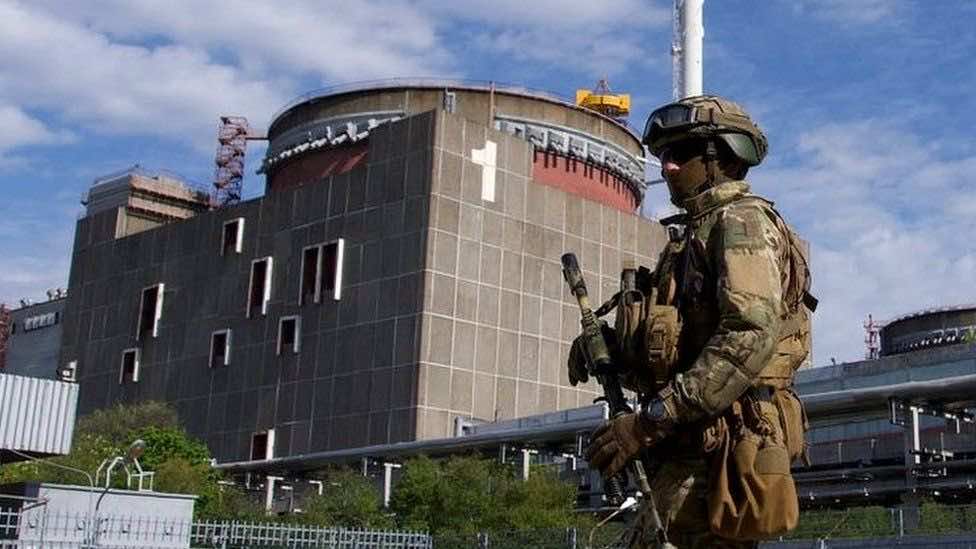The threat of a nuclear disaster heightened international concern Monday as shelling struck a Russian-controlled power station in Ukraine that is the largest one of its kind in Europe.
In addition, the Ukrainian National Nuclear Energy Generating Company announced on Telegram that invading Russian forces installed and activated mines at the Zaporizhzhia Nuclear Power Plant.
As worries of a calamity mounted following the weekend strikes that left the plant damaged but running, UN Secretary-General Antonio Guterres appealed for independent inspectors to be granted access to the massive nuclear site.
“Any attack on a nuclear plant is a suicidal thing,” he said Monday in Tokyo.
Russia and Ukraine have traded allegations about who is to blame for the attacks on Europe’s largest nuclear power facility.
But how grave is the situation, and what will happen next?
The plant, built during the Soviet era, is Europe’s largest nuclear reactor. Its six pressurized water reactors (two of which are now operational) are vital to Kyiv since they can power up to 4 million residences.
The facility, located on the south bank of the Dnieper River in Enerhodar, southwest of the city of Zaporizhzhia, occupies a highly vital strategic position for Russian and Ukrainian forces, who have been fighting for control of the site since the beginning of the war.
The existence of the water-cooled reactors and a spent fuel storage facility on the vast and spreading site has led Russia to use it as a “sheltered” artillery park, firing on Ukrainian forces with the idea that Ukraine would not fire back, risking a nuclear accident.
US Secretary of State Antony Blinken accused Russia of using the plant as a “nuclear shield,” stating, “Of course, the Ukrainians cannot fire back lest there be a terrible disaster with the nuclear plant.” This has enabled Russia to target towns such as the city of Nikopol across the river, which has been heavily shelled in recent weeks.
Two factors are feeding growing concern about the situation at the facility, which is under Russian authority. First, international nuclear safety officials have expressed concern about a lack of replacement parts, access to routine reactor maintenance, and interaction with workers, all of which have been hindered by the ongoing violence.
A second issue is a grad missile fire near the factory over the weekend, with Russians and Ukrainians alleging responsibility. The impacts occurred close to the nuclear fuel storage area, according to Energoatom, the Ukrainian atomic authority, with the operator alleging Russian troops “aimed directly” at the containers despite Russian personnel at the site.
Furthermore, the plant’s safety operations are likely the most critical issue since the potential of a strike has aggravated a failing safety regime induced by the disagreement.
However, it is worth remembering that Ukrainian officials have occasionally inflated assertions about the nuclear hazards posed by the warfare at both Chornobyl and Zaporizhzhia – so it is unclear how hazardous this weekend’s incident was in itself.
Currently, Ukraine has demanded that the Soviet-era plant be demilitarized after the Russian firing on Friday and Saturday.
The Russian attacks damaged several buildings, put one reactor offline and raised the threat of radiation leaks and fires, according to Energoatom, Ukraine’s national energy company.
According to the Russian Defense Ministry, Ukrainian artillery struck the plant, breaking a high-voltage power line serving the Zaporizhzhia and Kherson areas. In any case, political officials worldwide have warned of a greater risk of tragedy, and Energoatom’s chairman announced Saturday that the shelling had left 54,000 people without power.
A Ukrainian counteroffensive may now set its sights on the plant that Russian forces captured early in the conflict.
Petro Kotin, CEO of Energoatom, has urged the Russian military to leave the area and turn over control to a group of peacekeepers.

